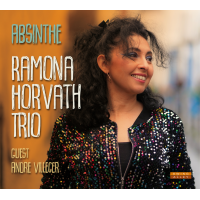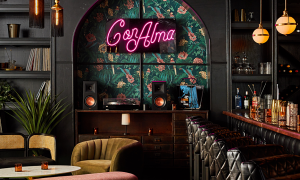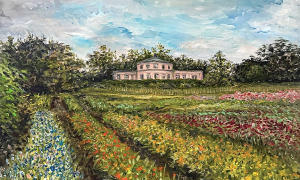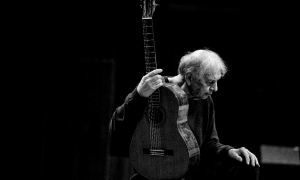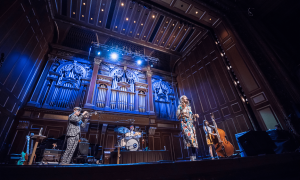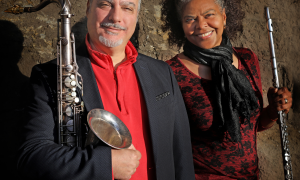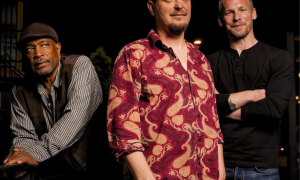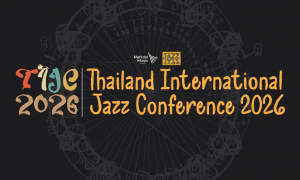
It was while I was bumpily making my way across a rope bridge in a quiet corner of Michael Jackson's Neverland Ranch on Thursday morning -- next to an elaborate treehouse crowned with a ship's wheel, and overlooking a bronze sculpture of smiling children -- that I finally figured out what the late entertainer's compound represents from an architectural point of view.
Jackson didn't commission Neverland's Tudor-style main house. That 13,000-square-foot structure, which sits nestled under a collection of magnificent oak trees, was built in 1981 by real estate developer William Bone, from whom the singer bought the property for $19.5 million in 1987. But the changes Jackson made to the 2,600-acre property over the years -- notably, adding a slew of kid-friendly attractions -- markedly changed the place, softening it and shrinking it to less than full-grown scale.
At the height of his popularity, Jackson bent the music industry toward an androgynous, perpetually childlike model of superstardom. He managed a similar trick in transforming the architecture of this classic Santa Barbara County ranch property.
Instead of symbolizing the broad-shouldered, Reaganesque masculinity of other ranches, this ranch, in Jackson's hands, became somehow neutered and sexualized at the same time. In the process, Jackson's Neverland offered an alternative model for the celebrity compound -- both connected to and held at arm's length from the scrum of Hollywood and the entertainment business.
As part of a group of journalists granted access to Neverland, I drove onto its extensive grounds just after 9 a.m. Inside I found a nearly bottomless supply of what I'd come in search of: architectural symbolism, for starters, along with some sense of how Jackson spent his days here.
Ranch architecture, low-slung and embracing the outdoor landscape, is typically about easy contact, even symbiosis, with nature. For President Reagan, who set up a Western White House in the hills just south of Neverland, the ranch was a place to roll up his sleeves and chop wood -- and to pose for photographs chopping wood, taking advantage of his Hollywood savvy to burnish his outside-the-Beltway credentials. The same was true for President George W. Bush and his compound in Crawford, Texas.
For William Randolph Hearst, meanwhile, whose San Simeon estate is about 100 miles north of Neverland, the California coast was a place to show off his collected treasures, framed precisely by architect Julia Morgan, and to throw outrageous, gin-soaked parties for his movie-star friends.
Jackson was happier playing video games in a large room overlooking his sunken tennis court, reading the volumes he stockpiled on trips to bookstores in Los Angeles or watching movies inside the free-standing theater he commissioned. Ultimately, of course, it became impossible to tell which of the amenities added to Neverland were designed to please the young cancer patients and other kids Jackson invited and which to please the kid-like Michael himself.







